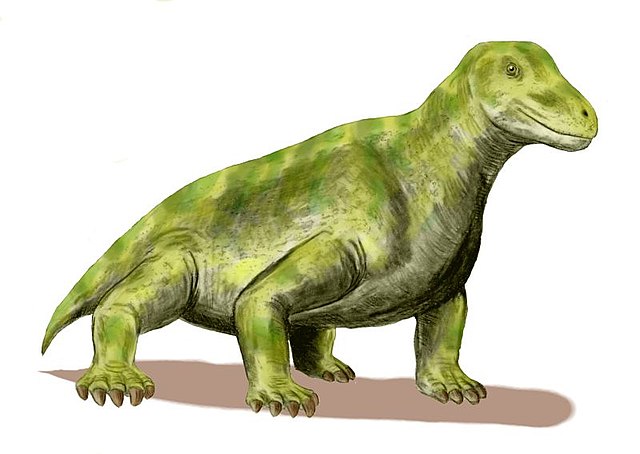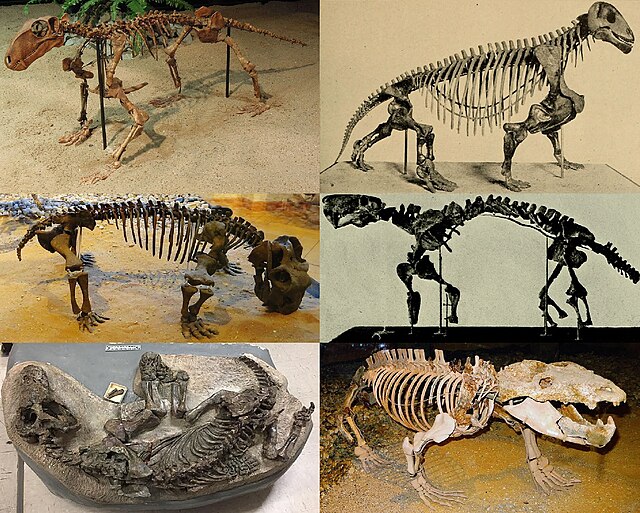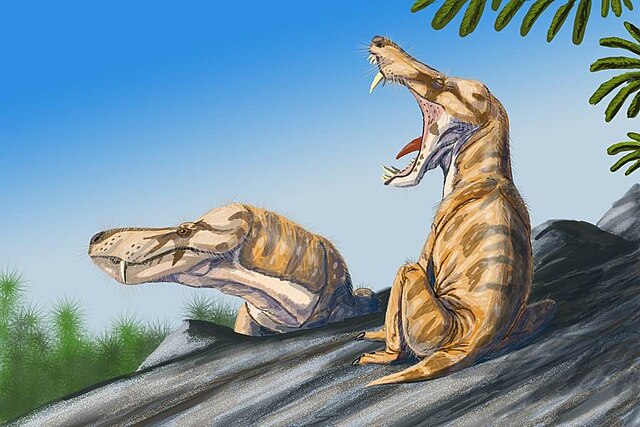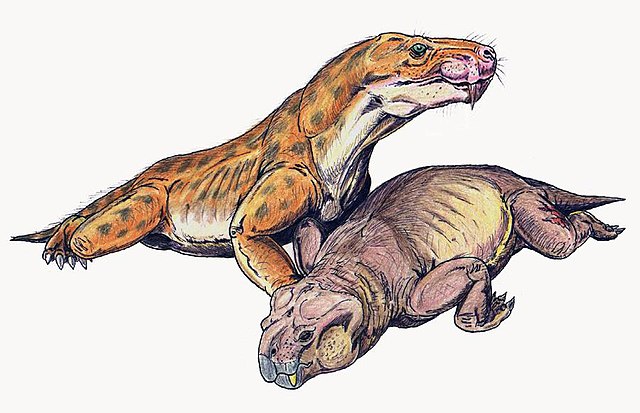Dinocephalians are a clade of large-bodied early therapsids that flourished in the Early and Middle Permian between 279.5 and 260 million years ago (Ma), but became extinct during the Capitanian mass extinction event. Dinocephalians included herbivorous, carnivorous, and omnivorous forms. Many species had thickened skulls with many knobs and bony projections. Dinocephalians were the first non-mammalian therapsids to be scientifically described and their fossils are known from Russia, China, Brazil, South Africa, Zimbabwe, and Tanzania.
Dinocephalia
Life restoration of Moschops capensis
Skull of Titanophoneus
Estemmenosuchus, an estemmenosuchid
Therapsida is a clade composing of a major group of eupelycosaurian synapsids that includes mammals and their ancestors and close relatives. Many of the traits today seen as unique to mammals had their origin within early therapsids, including limbs that were oriented more underneath the body, as opposed to the sprawling posture of many reptiles and salamanders.
Therapsida
Illustration of Alopecognathus, an early therocephalian therapsid
Holotype skull of Raranimus dashankouensis, the most basal known therapsid
Restoration of Euchambersia with dicynodont prey. Note that this South African therocephalian is suspected to be the oldest known venomous tetrapod.








